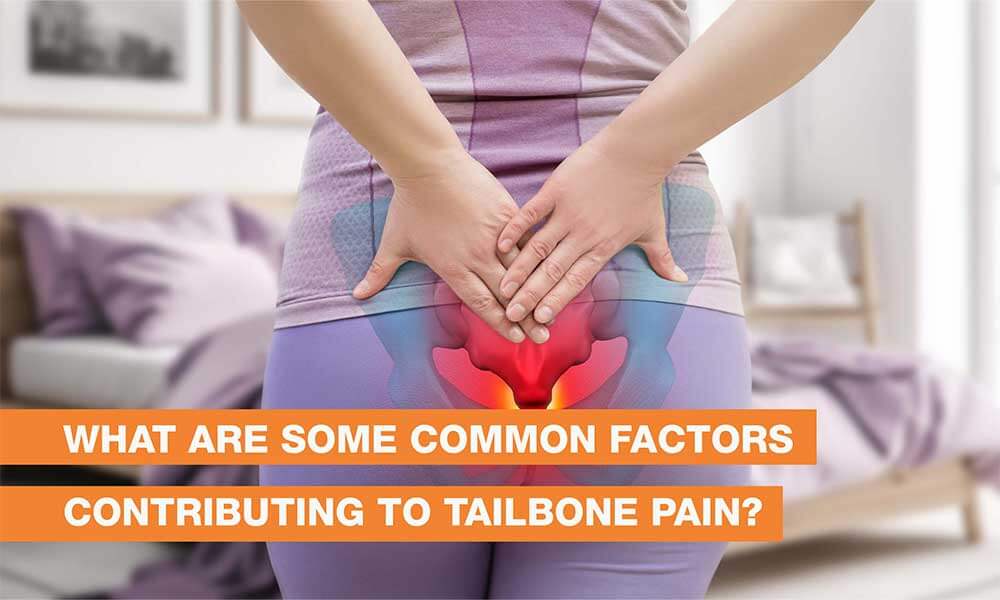Request Appointment
Enter your details and we will be in touch with you shortly;
Or call
8655885566
between 8 am and 8 pm.


Tailbone pain, also called coccydynia or coccyx pain, is a condition that interferes with people’s day-to-day activities. Most patients even have pain during routine physical activities such as sitting or standing. Though the coccyx is merely a little triangular bone situated at the lower back, it may eventually bring substantial disturbances to your standard of living. Most incidences of tailbone pain are usually of mild to moderate intensity and subside on their own or with treatment. However, some situations call for more therapeutic interventions. The article looks at the causes of tailbone pain and some possible measures for treatment.
This pain is caused by a variety of factors, some more frequent than others. Among the leading causes of pain in the coccyx are the following:
A fall or a direct blow to the tailbone, especially on a hard surface, can bruise the coccyx, fracture it, or even dislocate it. Cycling, horseback riding, or contact sports may also cause strain to the coccyx and give rise to painful conditions.
Spending extended periods sitting, especially on hard surfaces, can compress the coccyx. Poor posture, if not supported properly, will put increased pressure on the coccygeal region, causing soreness in the coccyx with time.
Repetitive activities that involve bending or twisting at the waist can strain the muscles and ligaments attached to the coccyx. This can cause inflammation and pain, particularly if the activities are performed without proper body mechanics.
Carrying excess weight can put immense pressure on the coccyx and surrounding tissues. This additional strain can thus lead to coccygeal irritation or worsen a current problem with their coccyx.
During childbirth, the coccyx may be subject to pressure, stretching, or even injury due to the baby’s passage through the birth canal. This can result in long-term pain or discomfort in the tailbone region.
Arthritis, a degenerative disease, may involve the joints around the coccyx. Over time, these may cause progressive stiffness, Coccyx inflammation, and pain around the tailbone.
Although rare, infections or tumours in the pelvic region can cause referred pain to the coccyx. If left untreated, these conditions can result in severe Coccyx soreness.
Muscle tension may worsen pre-existing coccyx discomfort and emotional stress and worry might add to this.
The course of treatment will depend on the cause. Common treatment approaches include:
Effective treatment of Tailbone injury starts with proper diagnosis. The practitioner examines the patient physically and goes through the medical history taken from the patient. In certain instances, X-rays or MRI may be required in cases of fracture, dislocation, or any other underlying medical condition responsible for coccygeal pain.
While not all coccyx pain is avoidable, several habits can reduce the risk, including good posture, cushioned seating that is ergonomically designed, avoidance of repetitive strain, and regular exercises that focus on the spine and its supporting muscles.
Tailbone pain, or coccydynia, might be concerning in everyday life, but there are always ways to find the right kind of treatment based on its causes. If you experience persistent coccyx pain, consult a healthcare professional to explore your options and improve your quality of life.
Visit our nearest clinic for your first consultation
The doctors perform a physical examination of the coccyx, looking at pain and mobility. In addition to these, X-rays or MRI scans may be advised to confirm fractures, dislocation, or other problems.
Coccydynia usually is not serious; however, constant discomfort can interfere with daily activities. If the pain lasts for weeks, it’s wise to consult a physician in order to properly diagnose and treat it.
Muscle aches are usually accompanied by Tailbone soreness or stiffness that improves with rest or gentle movements. Pain that involves the spine is more likely to be sharp, may radiate down into the legs, or worsen with movement; a doctor must evaluate this for an accurate diagnosis.
For the relaxation of the muscles at the tailbone, a few mild stretches are available that can be done, or a heating pad can be applied, or to relax through deep breathing to let go of the patient can sit on a soft surface to reduce pressure on the coccyx.